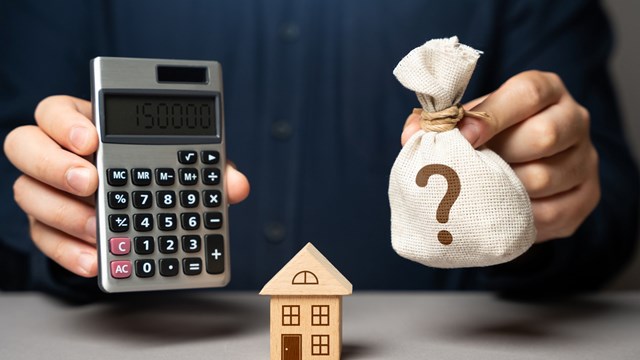
Every time someone enters or leaves a building, they travel through at least one of the common areas. Multiply that times the number of units in a building and you can get a rough idea of how much faster these areas may wear out than any individual unit. When you consider that buildings are in competition with each other for prospective buyers, it becomes evident that these shared spaces will not only need to be aesthetically pleasing, but will need to be updated and renewed regularly. But what happens when a building is short on cash for these expenses?
First Impressions
The case for renovation is a strong one. In a competitive market, sales can be won and lost based on emotional whim, and buying or renting a new home is about as subjective as it can get. “I’ve had brokers tell me that sales are won and lost even before the client sees the apartment,” says Susan Lauren of New York City-based Lauren & Chase Design Group. “If you were looking to put down a large sum of money, perhaps your life savings, and on the way to the apartment you are disappointed with the lobby, the elevator, or the stairs…if they look shabby to you, who cares how fabulous the apartment is? Renovations of this kind can affect unit sales by 10 to 15 percent in most cases.”
“There is a lot of new construction going on all around the city so for older buildings, it’s more difficult to compete with these newer buildings because they are clean and beautiful and up-to-the-minute,” continues Lauren.
Renovations may include developing new amenities in order to stay current, says Lauren. “All buildings need to be up-to-date, and it doesn’t matter if it’s a contemporary or traditional building. Expected amenities have come to include things like bike rooms, roof decks, fitness centers, party rooms, and even tracking systems for when packages come to the building.”
The other big note about updating amenities is that it speaks well of the management of the building if the common spaces are clean and new, or modern and generally well-cared for.
Wear, Worn, and Worn Out
Some common areas have a tougher time than others, says John Buscarello, an interior designer with Manhattan-based John A. Buscarello, Inc. “Every building is a little different. Some very fancy buildings don’t like anyone sitting in the lobbies or hallways and so the furniture will not wear out as quickly. Carpeting gets worn out very quickly, particularly if there are not service mats. Baseboards and corners also take a lot of abuse.”
“Lobbies and corridors are heavy traffic areas and they take a lot of abuse,” adds Marjorie Hilton of Marjorie Hilton Interiors. “People come in with boots and flip flops, kids come in spilling milk, they deal with water, and so on…the floor is usually the first thing that needs attention.”
In addition to more traffic, common areas get a different kind of wear, says Buscarello. “People coming in and out of a building are not sitting on the furniture with the same care that they might in someone’s living room.”
Money Talk
For many buildings, the desire to renovate is there, but the funds may not be. The recession has put a strain on available finances, yet the work is important…so what’s a building to do? Developing a realistic strategy and working with the right people may get you more than you expected.
“The main thing is that you must establish a budget,” says Hilton, “and then it is up to the professional to tell you what you can get for that number.”
Most people are unfamiliar with the cost of materials and labor, and so developing an appropriate budget may be challenging.
“Have a designer come in and give a free budget estimate,” answers Lauren. “That will give you a good idea of what to expect. People are very unrealistic sometimes, thinking that a project shouldn’t be more than a certain dollar amount, without considering how much material it will take, how large the space is, how many floors need to be addressed, and that sort of thing.”
In some cases it may be a good strategy to implement a plan in phases, but not in the case of this type of renovation, says Lauren. “It’s actually in people’s best interest to do the renovation all at once, as opposed to a phased or piecemeal approach. Sure you can just replace the carpet, and if everything else is good to go, there’s no problem. But what ends up happening is that every so often something goes, needs to be replaced, and you end of spending a lot more on the total project over time. Doing the entire renovation all at once gives the designer and the building more negotiation leverage with contractors, and it helps to make sure that the new design is cohesive.”
Also be wary of allowing the lack of available funds to completely thwart the effort, says Buscarello. “If you are going to do a renovation, you want the final product to be better than what it is now. If you are going to do it too inexpensively, you may come out worse off on the other end.”
Going Pro or Not?
Designer: unnecessary overhead, or crucial piece of the project? Some may be tempted to avoid hiring a professional and apply the entire budget to materials and labor. Seems to make sense, but does it?
“Get a designer,” says Lauren. “I know people think they are going to save money by doing it themselves but you run the risk of making mistakes. It’s not the design fee that going to cost you a lot of money, it the construction and materials that are going to cost you a lot of money. If you have a quarter-million-dollar renovation, putting 10 percent towards a design fee is worth it because they designer will help you pick the right materials, ones that will last—and by picking the right look—help you gain the market share that you are looking for.”
Designers do more than just choose materials; they will help to helm the project in many ways, says Hilton. “People will get into huge catfights over opinions. And one of the roles of the designer is mitigate disagreements and find common ground.”
The designer can also see elements that may not need replacement, continues Hilton. “In one renovation that I did recently, nearly everything needed to go, but the marble floor was gorgeous, so I recommended that we keep it. We used the budget on the walls instead.”
Sometimes there is a designer who lives in the building and may offer services, but this has some important drawbacks as well, says Buscarello. “When people work for free you might end up getting what you pay for. It also takes the objectivity out of the equation. If you can afford to do the renovation you can afford to hire a designer for at least a couple of hours of consultation.”
The cost of hiring a designer may not be as high as you think, says Lauren. “The industry standard is 10-11 percent of the overall construction budget, but clients can also get a flat or hourly fee, and each job can be negotiated separately.”
Tips and Tricks
Knowing which parts of the renovation are vital and which are not can be challenging, and each project will have slightly different priorities. Generally, there a few things can make the most change for the least investment.
“The lighting, wall coverings and floor are key,” says Hilton. “Furniture is negotiable. You can throw it out and have a table with a flower arrangement if there’s no budget to work with.”
“Paint is always a cost-effective way of changing a room,” adds Buscarello. “People tend to forget about the ceiling. Repainting a dingy white ceiling with a sky blue or lemon yellow can add a lot of interest.”
Changing out the lights is a good way to upgrade on a budget,” says Lauren. “This type of renovation saves money over time, through smaller energy bills and longer bulb life.”
“LED lighting has come a very long way in the last couple of years,” adds Buscarello, “and where it used to be horrible, harsh light, LEDs are now on the leading edge of lighting design. Depending in the building, there are all kinds of rebates for changing out the light bulbs in common areas.”
Be wary of selecting materials according to price only, says Buscarello. “I am not a fan of inexpensive furnishings because they look inexpensive and they usually don’t hold up.”
I’ve seen buildings that put in 100 percent wool carpets, for example. Now, that may sound luxurious but it’s not going to hold up under the kind of traffic that a lobby receives. You want to pick a carpet that has about 20 percent nylon, so that it’s more durable, and still gives the nice wool look to the space.”
Other Considerations
One of the things that buildings can do to make the process go more smoothly is to develop a design committee, made up of board and non-board members, says Lauren. There shouldn’t be any more than five on the committee, because too many opinions can really clog the process. This committee will helm the project internally.”
It also may become evident that the building just doesn’t have the budget available for the renovation. In this case it may be a better idea to postpone for a year, says Lauren. “You don’t want a Band-Aid where you actually need surgery. No one likes assessments, but it may be in the buildings better interest to do something like that, and make a plan for next year.”
If moving forward is a possibility, however, Hilton recommends doing it sooner than later. “There’s no time like the present. If it needs to be done, you shouldn’t wait. It’s going to get more expensive later on and it’s going to be more arduous to do, because there’s a turnover in buildings. It’s important to establish: we need it, this is how much we have to spend, let’s hire a professional, let’s establish a committee of two or three, and let’s get on with it.”
Redoing any common space is not a simple task. However, if you utilize a selective budget, follow a timely schedule and use a determined and efficient designer, the possibilities for your redesign are limitless and will serve both your building and your residents for years to come.
Denton Tarver is a freelance writer and a frequent contributor to The Cooperator.






Leave a Comment